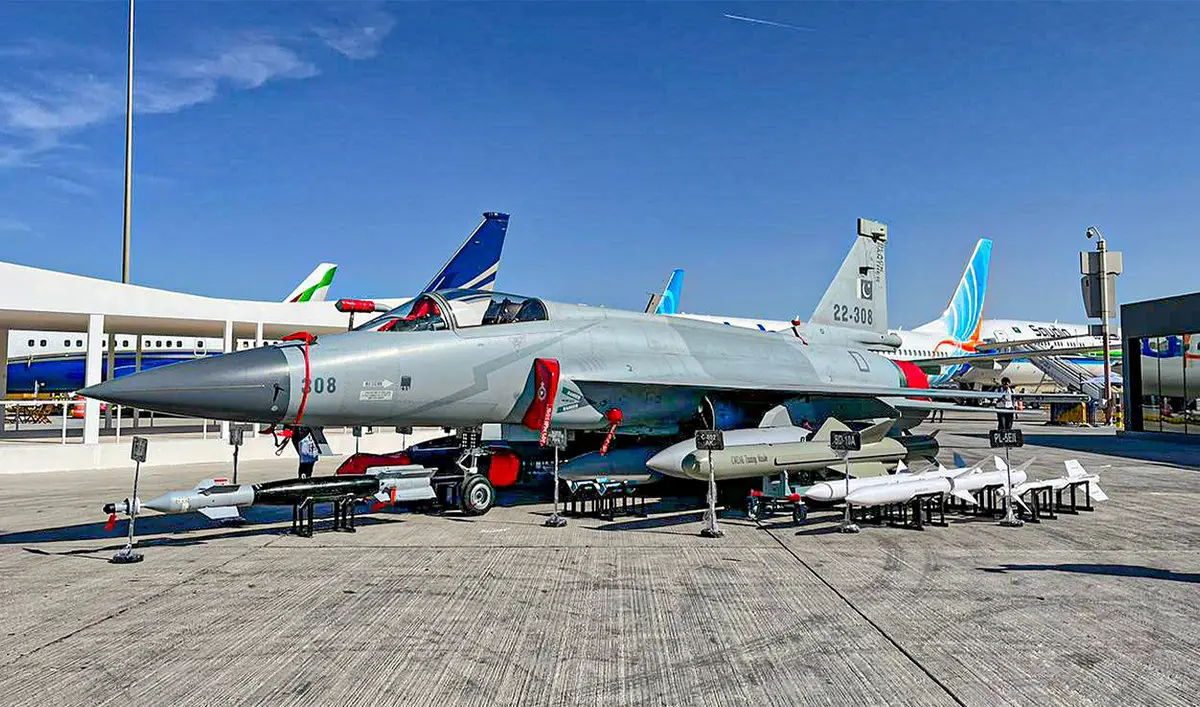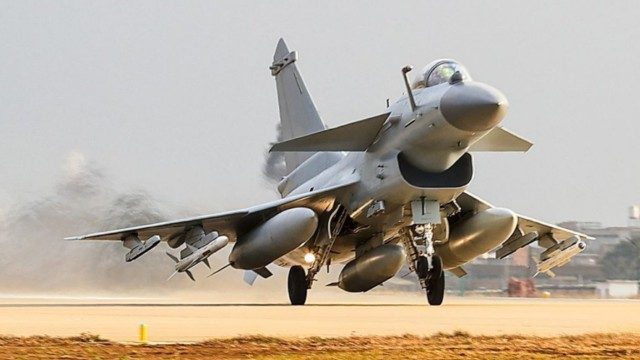Pakistan’s Production of Latest JF-17 Block 3 Fighter Jets Nears 30 Units
According to the Pakistani defense portal, this suggests that the production of JF-17 Block 3 fighter jets has exceeded 20 units and is approaching the 30-unit mark, as ordered by Pakistan for its air force.
(DEFENCE SECURITY ASIA) – In July, images and videos surfaced showing a Pakistani Air Force JF-17 “Thunder” Block 3 fighter jet with the serial number “323,” indicating that it is the 23rd JF-17 Block 3 aircraft.
According to the Pakistani defense portal, this suggests that the production of JF-17 Block 3 fighter jets has exceeded 20 units and is approaching the 30-unit mark, as ordered by Pakistan for its air force.
The JF-17 Block 3 is the latest variant of the JF-17 fighter jet, which made its maiden flight in 2019 and entered serial production in 2022.
The most significant enhancement in this latest variant is its integration of the KLJ-7A Active Electronically Scanned Array (AESA) radar, a Helmet Mounted Display and Sight (HMD/S), and an integrated Electronic Countermeasures (ECM) system.
In terms of armament, the JF-17 Block 3 is capable of launching the PL-15E long-range air-to-air missile, which is reported to have a range of up to 145 km.

Additionally, it can deploy the PL-10E High-Off Boresight air-to-air missile, which can be guided using the HMD/S during Within Visual Range (WVR) combat.
Reports also indicate that the latest variant of the JF-17 can launch the “Taimur” Air Launched Cruise Missile (ALCM), which is effective against both static and moving targets, including warships, with a strike range of up to 280 km.
The JF-17 Block 3 reportedly shares similarities with China’s JF-10C fighter jet, which is also used by the Pakistani Air Force.
Both aircraft utilize HMD/S systems, allowing pilots of the JF-17 Block 3 to transition and operate J-10C aircraft during their careers. Furthermore, both the JF-17 Block 3 and J-10C use the same air-to-air missiles, the PL-15 and PL-10.
The JF-17 Block 3 fighters are developed by Pakistan Aeronautical Complex (PAC) in collaboration with Chengdu Aircraft Industry Group (CAIG) of China.

The Pakistani Air Force is expected to acquire approximately 30 JF-17 Block 3 jets to augment its existing fleet of 98 JF-17 Block 1 and Block 2 aircraft.
The JF-17 Block 3 is also said to possess elements of the DNA of China’s fifth-generation fighter, the J-20 “Mighty Dragon.”
In its effort to counter India’s acquisition of Rafale jets, Pakistan announced last year that it had quietly purchased 25 J-10 fighter jets from China.
The single-engine J-10 was developed by Chengdu Aircraft Corporation.
International defense observers have noted that the Chinese-built J-10 is somewhat comparable to the U.S. F-16 but incorporates DNA from Israel’s now-canceled Lavi aircraft program.

Pakistan procured the latest variant of the J-10, the “C” version, as it is equipped with advanced features such as AESA radar and Beyond Visual Range (BVR) air-to-air missiles, specifically the PL-15.
The PL-15 missile is claimed to be a primary competitor to the U.S. AIM-120 “AMRAAM” air-to-air missile.
The J-10C is also reported to be powered by China’s indigenous WS-10C engine, rather than the Russian Saturn AL-31F engine, to avoid complications in selling the aircraft to Pakistan. — DSA



Comments are closed.